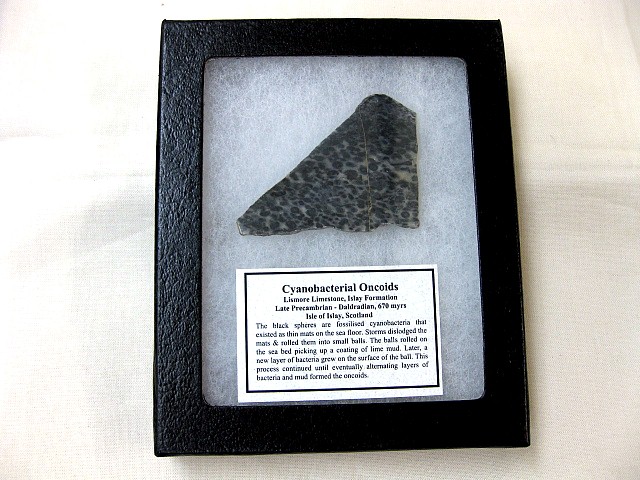Description
- Cyanobacterial Oncoids
- Late Precambrian Age
- Lismore Limestone
- Isle of Islay, Scotland
- Specimen measures approx. 2 3/8″ wide and will come in the 4.25″ X 5.25″ Riker Mount with Label as Shown
Cyanobacteria, also known as Cyanophyta, is a phylum of bacteria that obtain their energy through photosynthesis, and are the only photosynthetic prokaryotes able to produce oxygen. The name “cyanobacteria” comes from the color of the bacteria (Greek: κυανός (kyanós) = blue). Cyanobacteria (which are prokaryotes) used to be called “blue-green algae”. They have been renamed ‘cyanobacteria’ in order to avoid the term “algae”, which in modern usage is restricted to eukaryotes.
Oncolites are sedimentary structures composed of oncoids, which are layered structures formed by cyanobacterial growth. Oncolites are very similar to stromatolites, but, instead of forming columns, they form approximately spherical structures. The oncoids often form around a central nucleus, such as a shell fragment, and a calcium carbonate structure is deposited by encrusting microbes. Oncolites are indicators of warm waters in the photic zone, but are also known in contemporary freshwater environments. These structures rarely exceed 10 cm in diameter.







